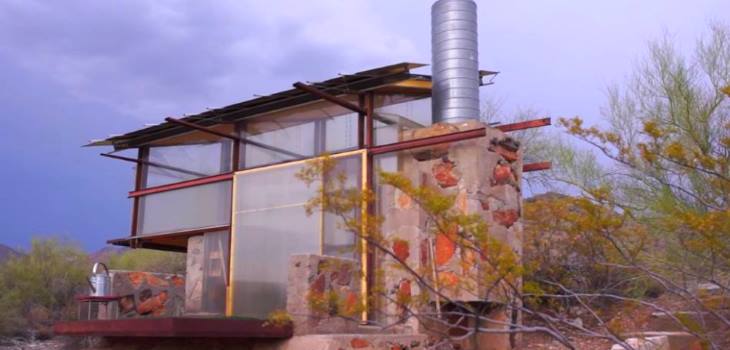
Take a walk around the off the grid homes on the campus of Frank Lloyd Wright’s Taliesin architecture school.
Students become full-time residents on both campuses, year-round, during their studies. This intense and rewarding residential experience is shaped by two forces that bear essential relevance on the experience of architecture: the force of the landscape as captured in the genius loci (spirit of place) of the two campuses, and the force of self-discovery in the context of a living culture of architecture. In addition to the more formal Integrated Studies (general education) requirements, students plan, prepare, participate in, and attend a wide variety of non-architectural offerings and activities at both Taliesin campuses.
“Since Frank Lloyd Wright began building Taliesin West– his winter home and school in the desert-, students have been living in canvas tents as an alternative dorm. It was direct study of nature and the land, both important elements of Wright’s organic architecture.
Today the Shelter Program has evolved and students can design and build more complicated structures (they’re given a $1000 stipend and encouraged to raise more), but the small shelters continue to be off-grid, unplumbed and often without walls. This direct contact with the desert helps students confront just what is needed to provide shelter. “To me an architect is a man who,” wrote Wright in his autobiography, “knows the secrets of nature and studies them, is informed by them and comes out stronger with knowledge.”
Stephanie Schull, director of academic affairs at the Frank Lloyd Wright School of Architecture, gave us a tour of a few of the 60 odd shelters (Note: We appreciate her giving us an impromptu tour and want to make clear that the opinions she gave during the interview were her opinions and not part of any school philosophy).”
More on Frank Lloyd Wright’s Taliesin Complex Here.













